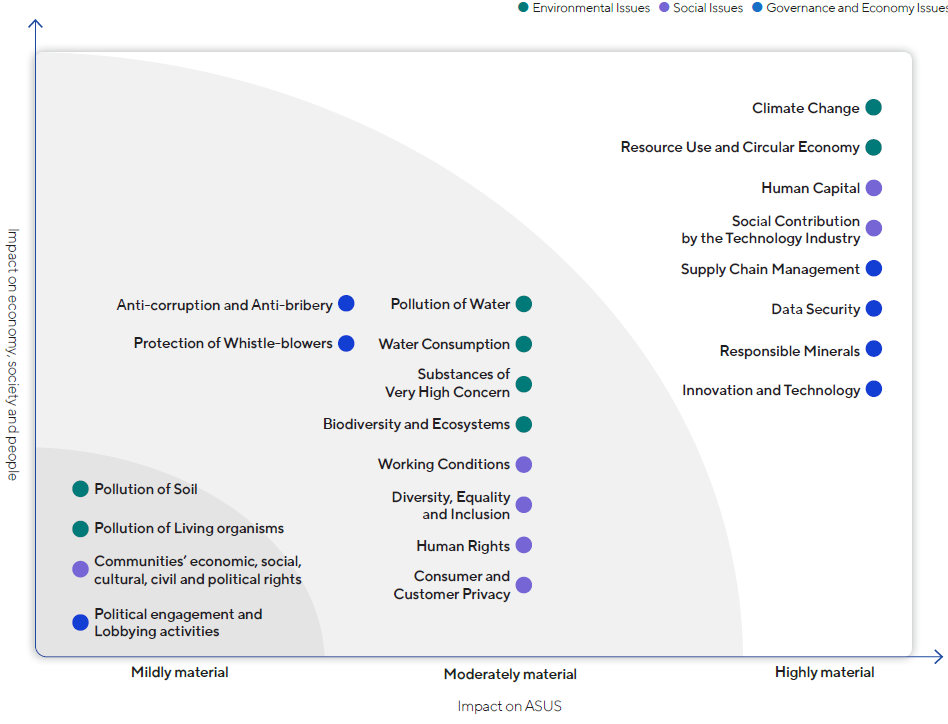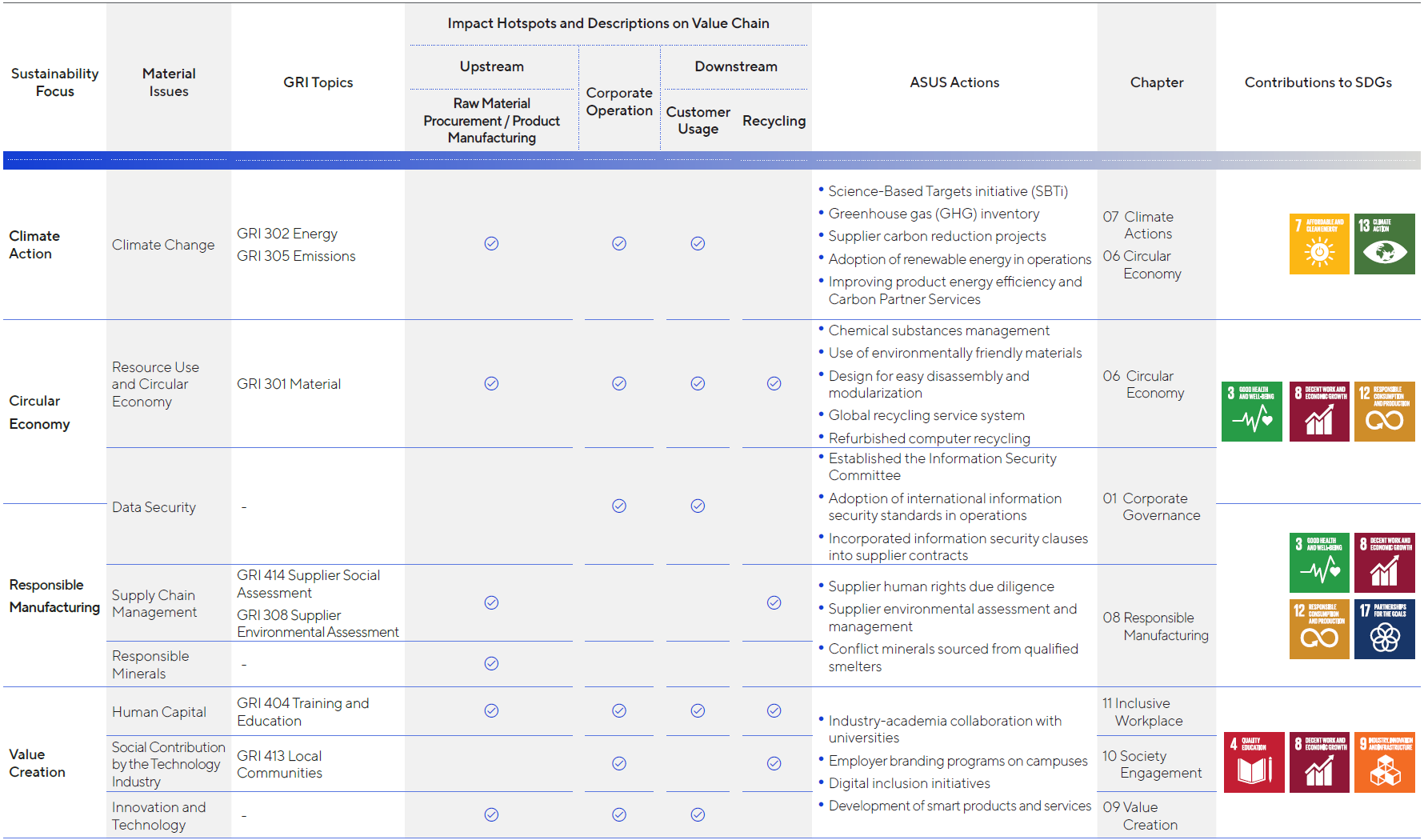The Assessment Process
Identification
Sources of Issues
Sustainability standards and reporting Ecolabel requirements, ESG ratings, environmental labeling regulations, and risk trends.
Level of Stakeholder Concern:
Stakeholder questionnaire
Consolidated into 23 sustainability issues

Impact Evaluation
- Impact on the “environment, economy, and people”
- Academic and research institutions
- Internal departments managing the respective issues
- ESG implementation team
- Impact on "ASUS"– Executive-level questionnaire
The sustainability team consolidates the results of stakeholder assessments and calculates the impact index for each issue
Considering stakeholder perspectives, adjust the impact index

Validation of Materiality
- The Sustainability Team compiles the impact degree of the issue and impact index

Validation of 8 highly material issues

Regular Reviews
- Management approaches and targets were established for high-materiality issues
- Quarterly reviews were conducted to monitor management actions and track progress toward targets
Review issues and processes Annually
Stakeholders Engagement
ASUS established its quantitative index based on five features under AA1000 SES, “Dependency, Responsibility, Influence, Diverse Perspective, and Tension.” Related parties with major influences on ASUS are identified from multiple stakeholders, including seven stakeholder categories of employees, customers, supply chain and business partners, investors, governments and NGOs, academic institution and society (i.e., community and media).
Through diverse channels, we carry out exchanges and engagements regularly and from time to time to understand stakeholders’ expectations:
Materiality Metric

Impact of Material Issues
For material issues, ASUS has established its management policies and formulated action plans and set targets and indexes based on the digitalized measurement strategies to periodically track the achievements. For other issues that are not material, we disclose existing management procedures and measures for stakeholders to understand the overall sustainability achievements of ASUS.


